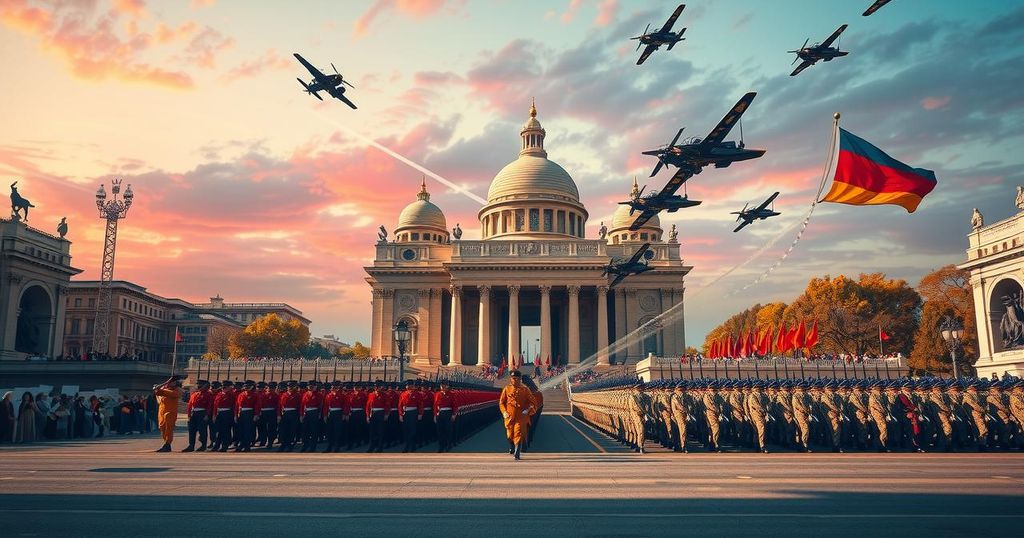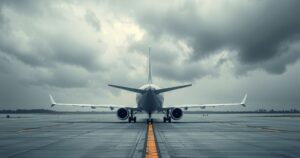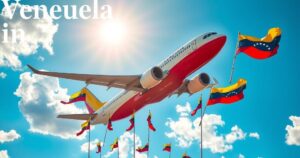Understanding the Symbolism Behind Military Parades

Military parades serve as spectacles and power displays, often reflecting national sentiments and the nature of regimes. The upcoming D.C. parade commemorates the U.S. Army’s 250th anniversary and President Trump’s birthday. Key elements of military parades include iconic settings, strategic invitations, displays of military might, and the portrayal of power through discipline, symbolism, and leadership.
Military parades serve as both grand spectacles and powerful messages, reflecting the nature of the regimes that host them. While authoritarian regimes utilize these parades to instill fear, democracies often hold them to celebrate national pride and accomplishments. In just a few days, Washington, D.C., will welcome a military parade marking the 250th anniversary of the United States Army, coinciding with President Trump’s birthday. It is interesting to observe how these events can convey varying motives.
A significant characteristic of military parades is their iconic settings. From the historic Tiananmen Square to France’s Arc de Triomphe, such parades often unfold in front of landmarks that embody national pride and heritage. This dramatic backdrop amplifies both the visual allure and emotional resonance of the events. As Leon Aron, a senior fellow at the American Enterprise Institute, noted, these locations symbolize military triumphs and sacrifices that have shaped national identity. The upcoming parade in D.C. will start at the Pentagon, continuing towards the National Mall, where they will pass Mr. Trump’s viewing stand on Constitution Avenue.
Strategic seating arrangements add another layer to the pageantry. Leaders often invite international dignitaries to underscore alliances and showcase their political strength. For example, President Putin strategically invited foreign leaders to Moscow’s Victory Day Parade, especially after international isolation due to actions in Ukraine. Dr. Aron remarked that excessive displays might indicate issues with legitimacy. Similarly, the French have long capitalized on inviting prominent foreign leaders, as illustrated when President Macron welcomed President Trump to the Bastille Day celebrations in 2017.
The expressions of military might showcased in parades cannot be overlooked. North Korea, under Kim Jong-un, employs these events to flaunt advancements in its weapons technology to both observers and adversaries, crafting a narrative of power. Critics suggest that the displayed might may sometimes not reflect reality, with John Spencer from the Modern War Institute stating, “These parades often parade fiction more than fact.” Conversely, China employs sheer scale as a message of strength, as exemplified by its recent National Day parade that featured over 500 Military assets.
Discipline is a theme deeply entrenched in military parades, where synchronized formations of soldiers send powerful messages of readiness. Audiences at home swell with pride, while potential foes may further apprehend their military’s resolve. Some countries even weave in acrobatic displays, and with 50 helicopters set to fly in formation, the Washington parade exemplifies this effort.
The personification of power often plays out at these parades, especially under authoritarian regimes. Parade-goers may witness floats and posters emblazoned with the leader’s face, reinforcing personal authority over military might. Different from this trend, Mr. Putin avoids using his image, opting instead for the St. George ribbon, a symbol historically linked to war veterans but recently associated with his policies in Ukraine. In contrast, Western democracies usually keep military and political realms separate, focusing on the military’s collective might rather than their leaders’ personalities.
As the Washington parade approaches, it is uncertain how it will unfold given the political context. Scott Kennedy, a senior adviser at the Center for Strategic and International Studies, hints that Mr. Trump may look to bolster his image through military admiration: “It’s possible that he hopes that in some ways people’s respect for the military and its capabilities rubs off on him.”
In conclusion, military parades are layered events that reveal much about the political climate of the host nation. They serve to celebrate, intimidate, and showcase power, reflecting both historical significance and current leadership dynamics. Whether in D.C. or elsewhere, the parades encapsulate messages of national pride and authority, leaving spectators with a lot to consider about the underlying motives. As seen in the past, these events are more than just displays; they are pivotal in shaping perceptions domestically and internationally.
Original Source: www.nytimes.com








